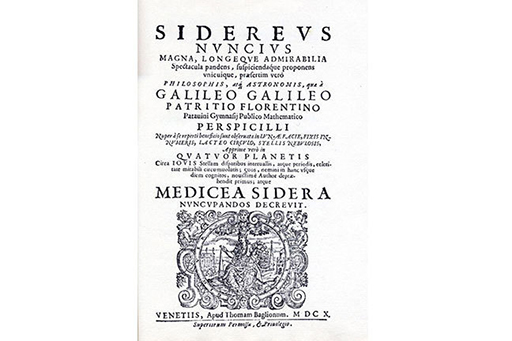2.2 Galileo’s thoughts
Here, in Galileo’s own words, are his thoughts about lunar craters. The ‘great spots’ are the dark lunar plains that can be seen by the naked eye. Galileo’s smaller, ‘thickly scattered’ spots are what we now call craters:
Now these spots, as they are somewhat dark and of considerable size, are plain to everyone, and every age has seen them, wherefore I shall call them great or ancient spots, to distinguish them from other spots, smaller in size, but so thickly scattered that they sprinkle the whole surface of the Moon, but especially the brighter portion of it.
These spots have never been observed by anyone before me; and from my observations of them, often repeated, I have been led to that opinion which I have expressed, namely, that I feel sure that the surface of the Moon is not perfectly smooth, free from inequalities and exactly spherical, as a large school of philosophers considers with regard to the Moon and the other heavenly bodies, but that, on the contrary, it is full of inequalities, uneven, full of hollows and protuberances, just like the surface of the Earth itself, which is varied everywhere by lofty mountains and deep valleys.
Translation by Peter Barker (2004)

